Содержание
- 2. Sentence Pattern = atomic sentence = kernel sentence Elementary structure of a simple sentence based on
- 3. Sentence Pattern = atomic sentence = kernel sentence Syntactic Morphological S + P S + P
- 4. Syntactic relations in phrases Predicative Attributive Objective completive Adverbial I see; the night being cold happy
- 5. Syntactical connections in the sentence Predicative Objective Attributive Adverbial Parenthetical (introductory) Secondary predicative Frankly, I read
- 6. Syntactic division Semantic (nominative) division Parts of the sentence Predicate main Subject bilateral dependency/ interdependence Secondary
- 7. I gave him the book yesterday. Syntactic division Semantic (nominative) division Parts of the sentence Predicate
- 8. I gave him the book yesterday. Syntactic division Semantic (nominative) division Parts of the sentence Predicate
- 9. I gave him the book yesterday. Syntactic division Semantic (nominative) division Parts of the sentence Predicate
- 10. I gave him the book yesterday. Syntactic division Semantic (nominative) division Parts of the sentence Predicate
- 11. I gave him the book yesterday. Syntactic division Semantic (nominative) division Parts of the sentence Predicate
- 12. I gave him the book yesterday. Syntactic division Semantic (nominative) division Parts of the sentence Predicate
- 13. I gave him the book yesterday. Syntactic division Semantic (nominative) division Parts of the sentence Predicate
- 14. I gave him the book yesterday. Syntactic division Semantic (nominative) division Parts of the sentence Predicate
- 15. I gave him the book yesterday. Syntactic division Semantic (nominative) division Parts of the sentence Predicate
- 16. I gave him the book yesterday. Syntactic division Semantic (nominative) division Parts of the sentence Predicate
- 17. Types of syntactic analysis Traditional (mentalistic approach based on considering semantic relationships of the constituents) Theory
- 18. Criticism of the traditional parts of the sentence Logical origin Focus on meaning rather than form
- 19. Criteria for singling out parts of the sentence Semantic: general meaning Morphological: grammatical form (part of
- 20. Subject Main syntactic function Not dependent on any other part of the sentence In English, marked
- 21. Semantic Types of Subject
- 22. Predicate Main syntactic function Action, process, state Verb / link (copular) verb + predicative Linked to
- 23. Types of predicate
- 24. Compound nominal predicate (verb complement)
- 25. Double predicate ? V = P + link He came home tired. She married young. He
- 26. Objective Predicative / Complement A secondary part of the sentence Expresses state or feature of an
- 27. Dispute We shall do it tomorrow. simple verbal predicate. Modal verb: The right of ownership for
- 28. Dispute: I began to laugh. Foreign linguists: object. Russian linguists: part of a compound verbal (phasal)
- 29. Dispute He made a mistake. She took a glance. Phraseological unit: predicate. Predicate + complement? Lexicology
- 30. Object A secondary syntactic function Oblique case Position: V+ O Objective link through adjoining or government?
- 31. Foreign linguistics (R.Quirk, S.Greenbaum, G. Leech, J.Svartvik) Complement Object Nominal phrase Co-referential with the subject or
- 32. Types of object
- 33. Direct or indirect object? He told me the whole story. She taught the children mathematics. We’ll
- 34. O3 or O1? We spoke about recent events. We bought about ten books.
- 35. Attribute A secondary syntactic function Modifies a nominal head Expressed by Adj / N (stone wall)
- 36. Semantic function: predication A beautiful flower The flower is beautiful.
- 37. Dispute: Part of a phrase or sentence? Lower rank, not depending on a predicate Hasty climbers
- 38. Specifics of English attribute The proximity rule: Children playing in the yard *Playing in the yard
- 39. Attribute or Object? The gloom of winter twilight closed about her.
- 40. Apposition - приложение Optional constituent of a noun phrase which agrees referentially with the nominal head:
- 41. Adverbial modifier (adjunct) A secondary syntactic function Characteristics of the action, circumstances Modifies the V (or
- 42. Semantic types of Adverbial Modifiers Time (It happened yesterday.) Place (He was working in the garden.)
- 43. State the type of AdM He went down sometimes to work in his garden. He ate
- 44. Object or Adverbial modifier? He walks the streets of London. I put it on the table.
- 45. Predicative or Adverbial modifier? They are in London. A.Smirnitsky: adverbial predicate.
- 46. Parenthesis Dispute: a) not included in a sentence as a constituent = loose part b) detached
- 47. Structural classification of parts of the sentence
- 48. Complex parts of the sentence make a specific feature of English syntax: Complex Subject: He was
- 49. Structural classification of parts of the sentence
- 50. Theory of the three ranks (Otto Jespersen 1937) Extremely hot weather
- 51. a furiously barking dog = a dog barking furiously
- 52. Junction vs. nexus Nexus: a dog barking… => a dog barks Junction: extremely hot weather In
- 53. Nexus The dog barks (at the neighbors). (I hear) the dog bark. The dog’s barking (was
- 54. Junction => nexus the expensive book => The book is expensive.
- 55. Immediate Constituent (IC) Analysis The concept introduced by Leonard Bloomfield. Aimed to analyze a linguistic expression
- 56. The professor gives a lecture. S NP VP Det N V NP Det N The professor
- 57. ACTUAL DIVISION OF THE SENTENCE or FUNCTIONAL SENTENCE PERSPECTIVE
- 58. Terms ACTUAL DIVISION OF THE SENTENCE Functional sentence perspective (Prague School: Vilém Mathesius 1929) Communicative structure
- 59. What is it? the informative value of different parts of the sentence in the actual process
- 60. Theme – Rheme theme ( “the basis” by V. Mathesius) = the starting point of communication,
- 61. How to find the rheme? Intonation, logical stress. Contrast. Special question. Telephone was invented by Alexander
- 62. Theory of communicative dynamism (Jan Firbas) FSP is not binary but is scalar with degrees of
- 63. The rheme is the obligatory informative component of a sentence, there may be sentences which include
- 64. Theme = logical subject Rheme = logical predicate
- 65. Actual & syntactic divisions
- 66. English rigid word order is compensated by a comparatively free functional sentence perspective: R – T
- 67. Formal lingual means of expressing R word order, constructions with introducers, contrastive and emphatic complexes, articles
- 68. Importance for Text construction T1 – R1 T2 – R2 (R1 = T 2) T3 –
- 69. Aspects of the sentence Parts of the sentence Theme-rheme objective/ subjective designation of the situation: Participants
- 70. Semantic aspect of the sentence Sentence Dictum/Proposition Modus designatum attitude towards the designated The tree was
- 71. Functional aspect of the sentence Actual division = informative value of a sentence constituent Given New
- 72. Glossary Ядерное предложение (Не)распространенный член предложения Предикативная связь Атрибутивная связь Объектная связь Обстоятельственная связь Комплетивная связь
- 73. Простое глагольное сказуемое Сложное модальное сказуемое Сложное фазовое сказуемое Сложное именное сказуемое Именной член сказуемого Дополнение
- 75. Скачать презентацию
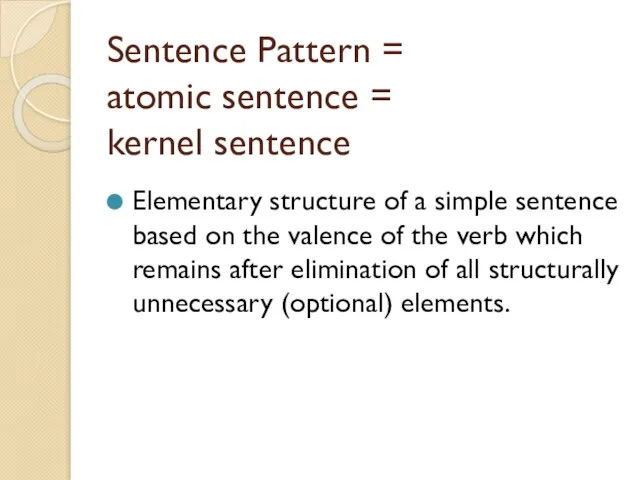

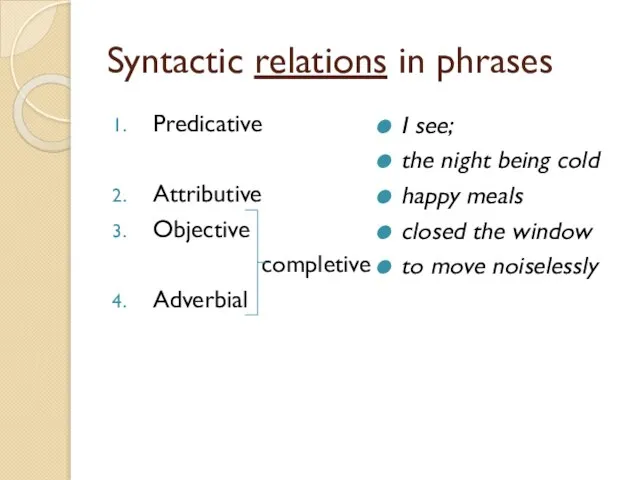
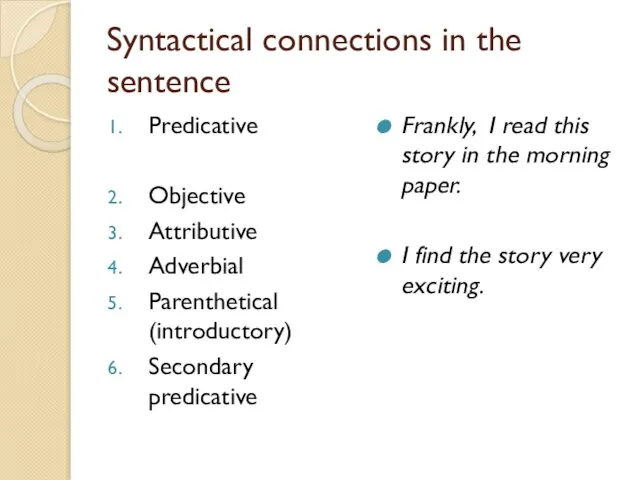
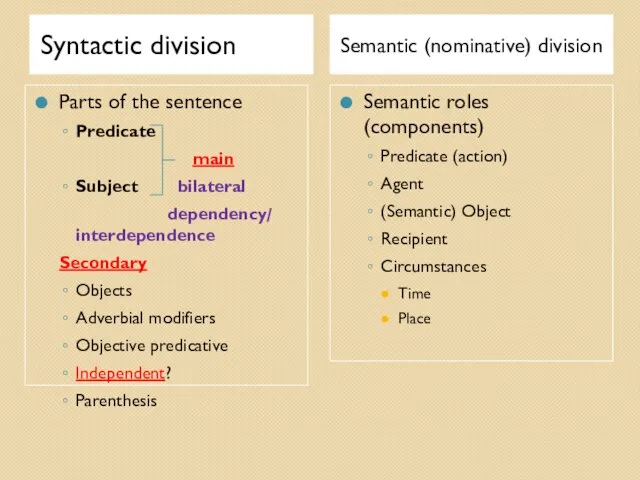



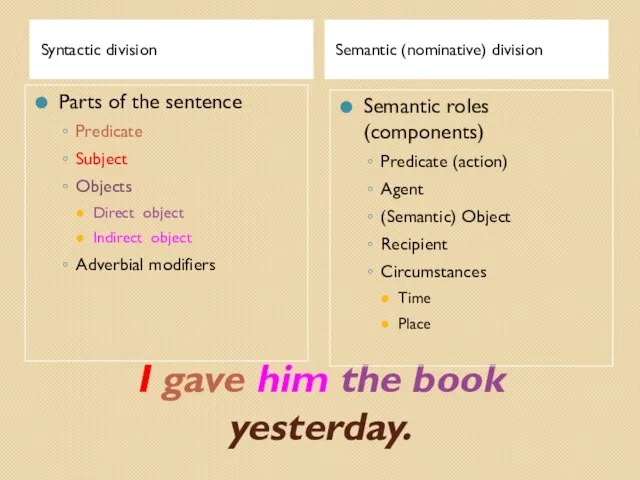
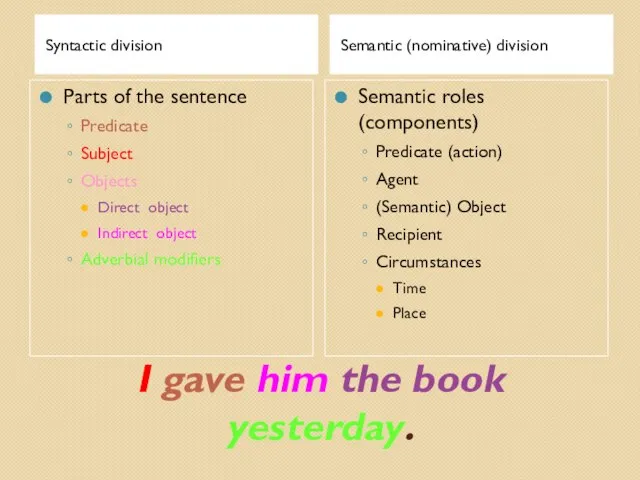
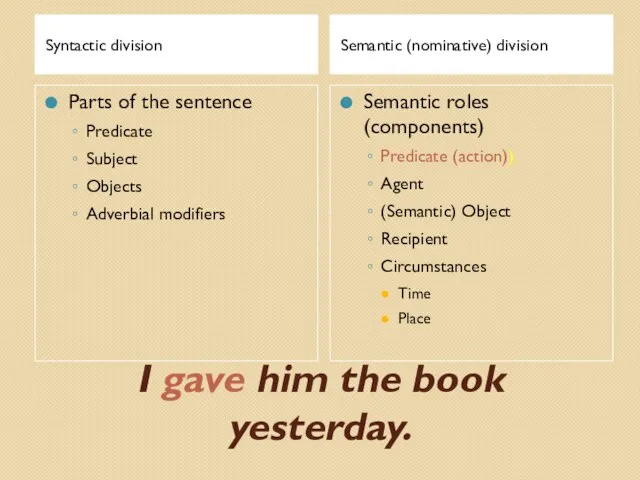
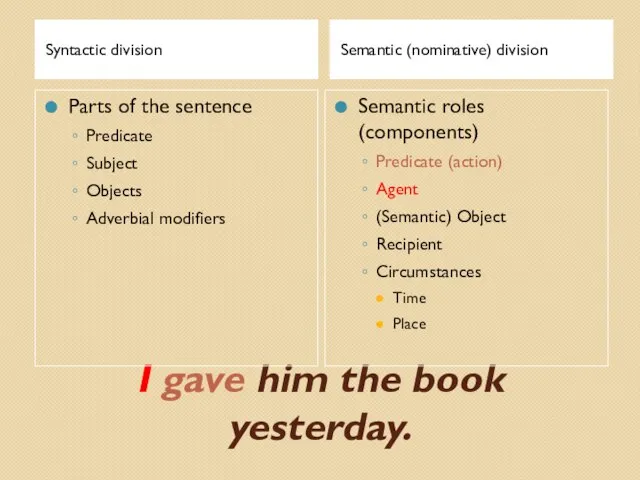
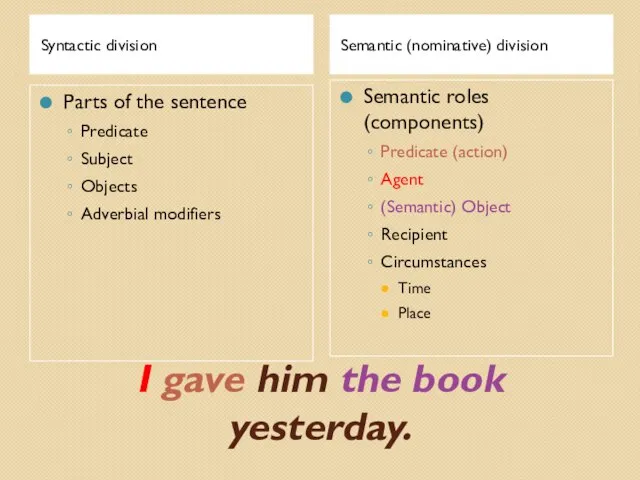

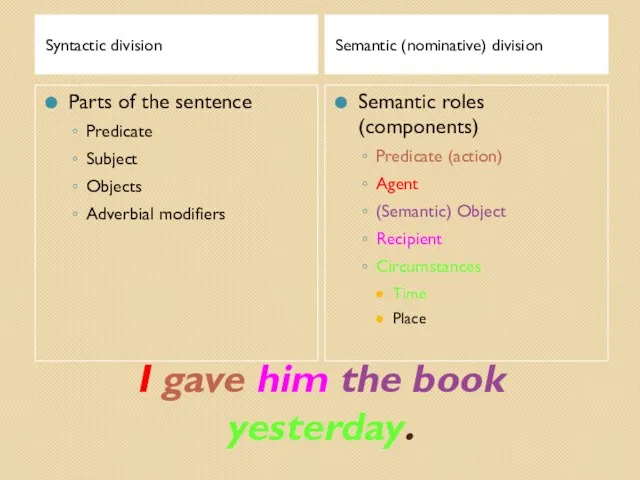
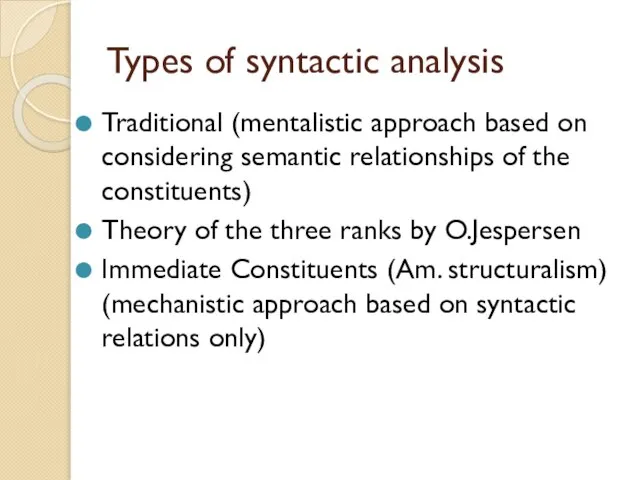
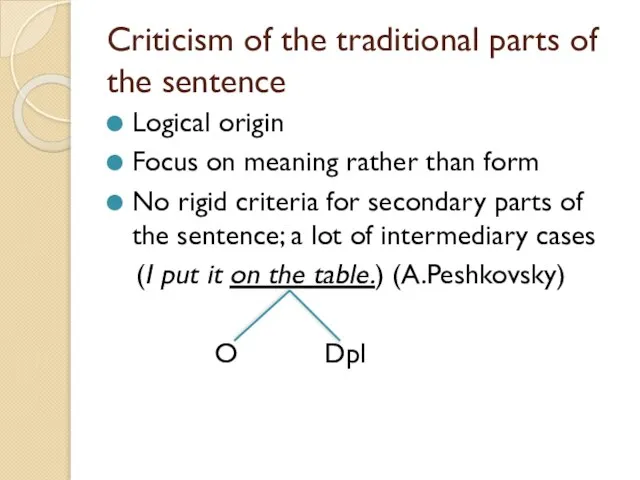
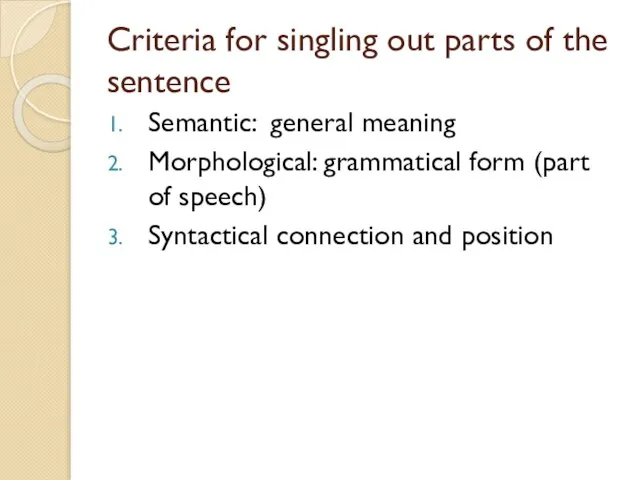
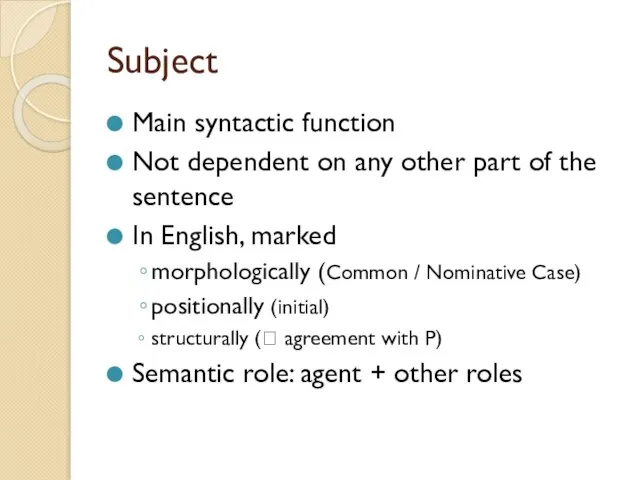

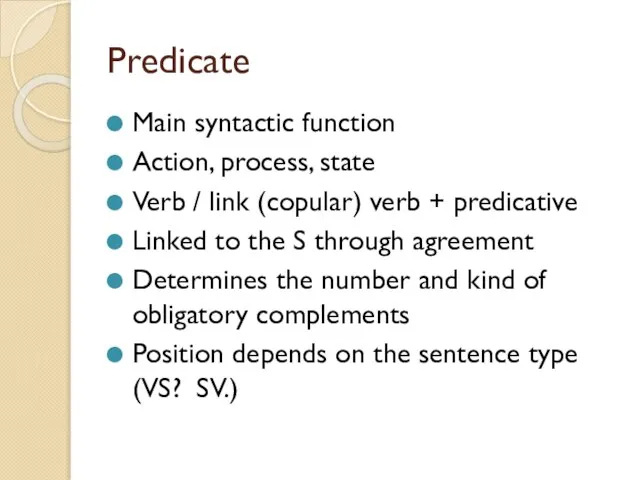
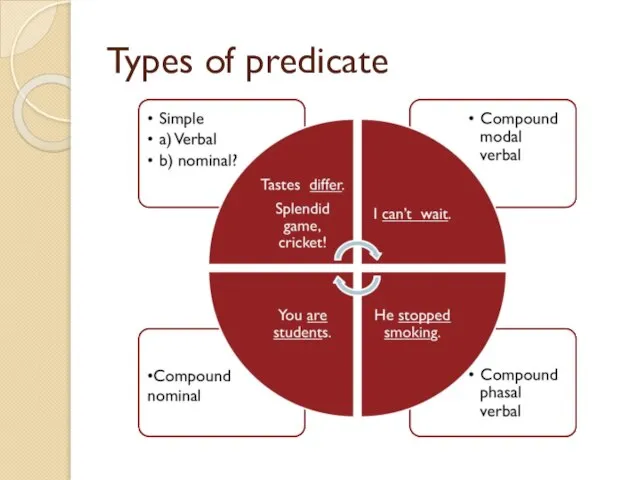
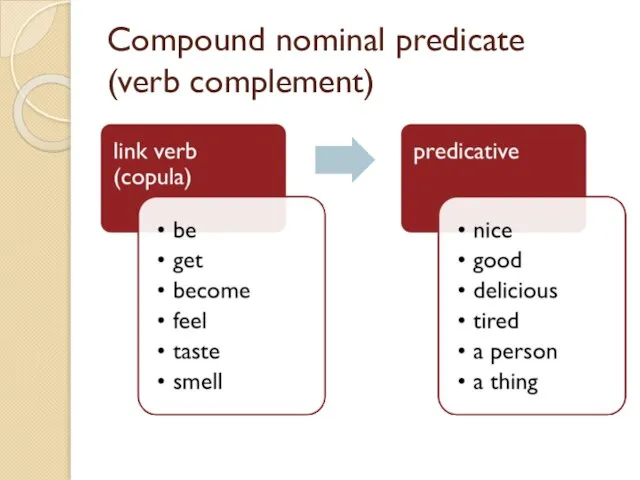

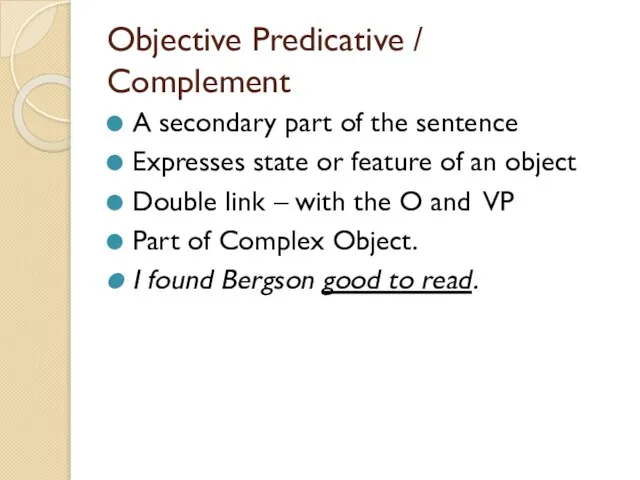
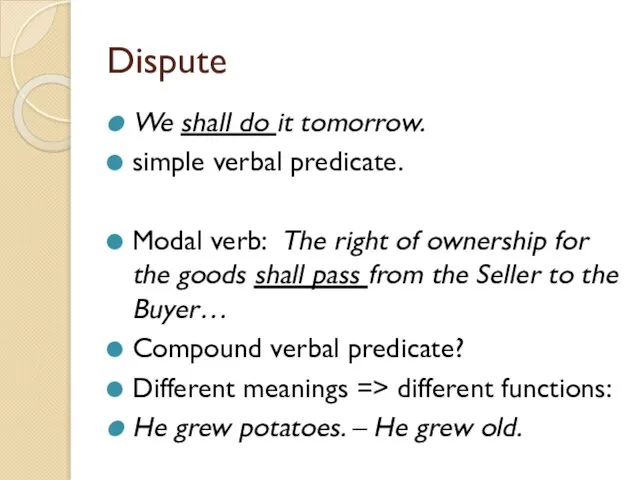
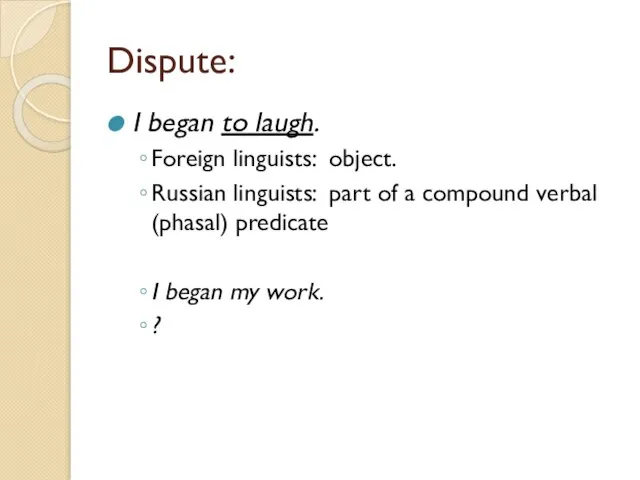
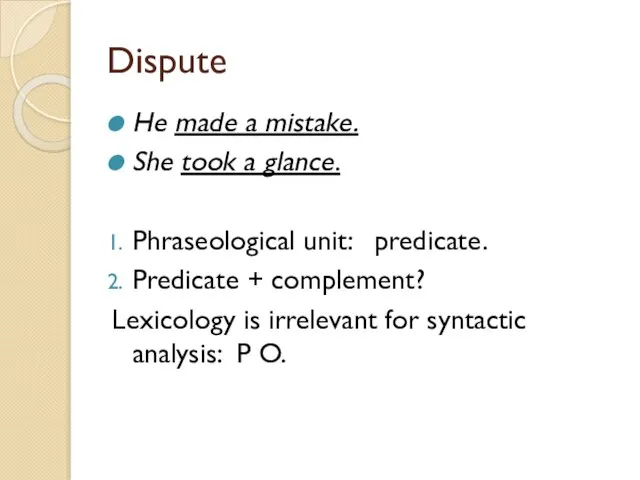

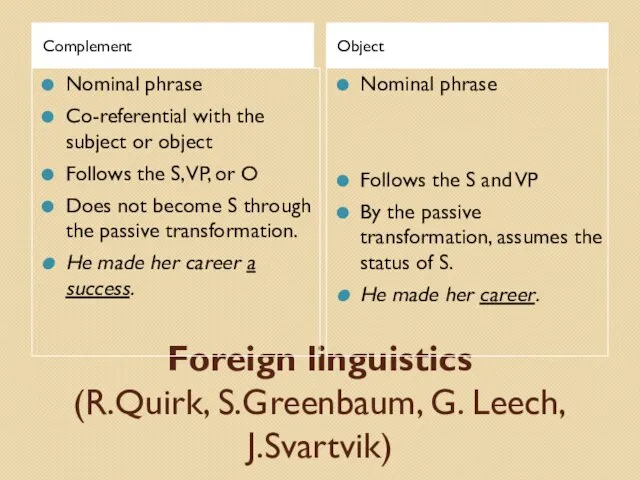
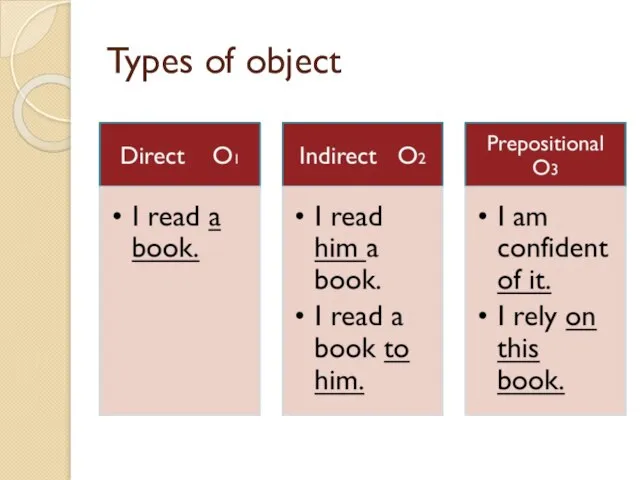
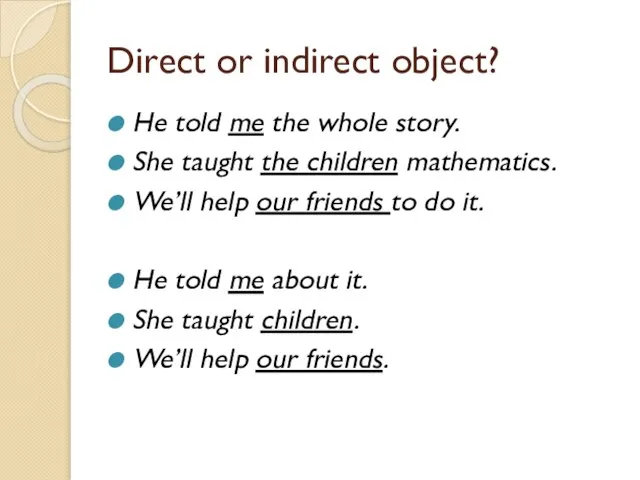
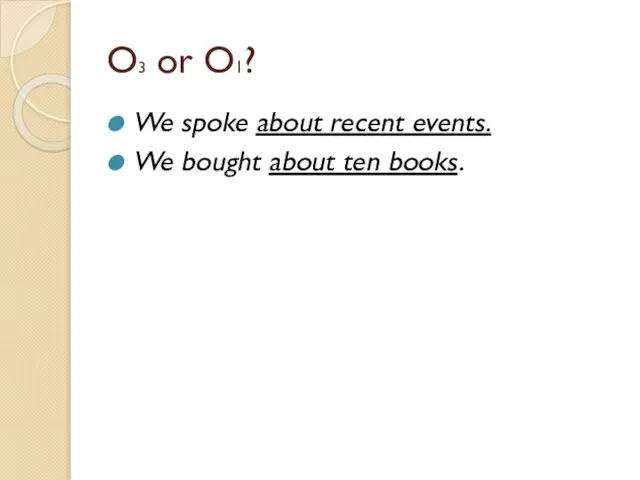
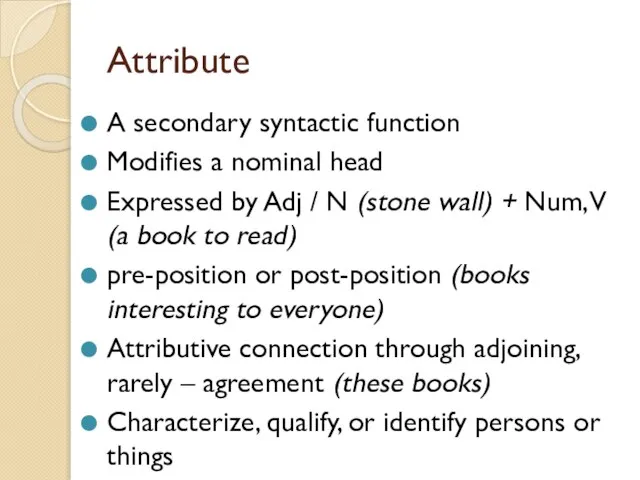
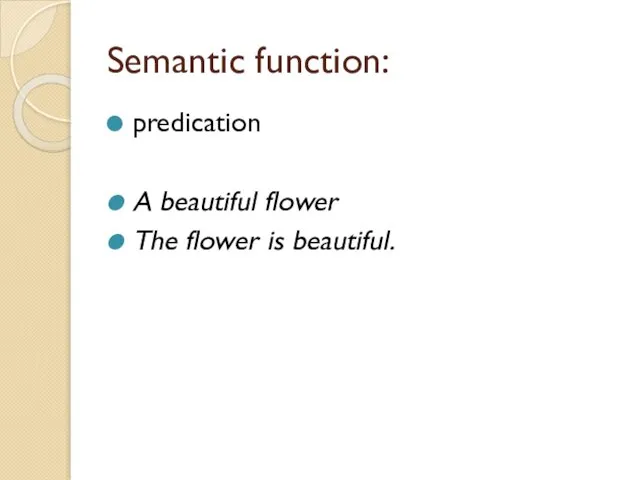


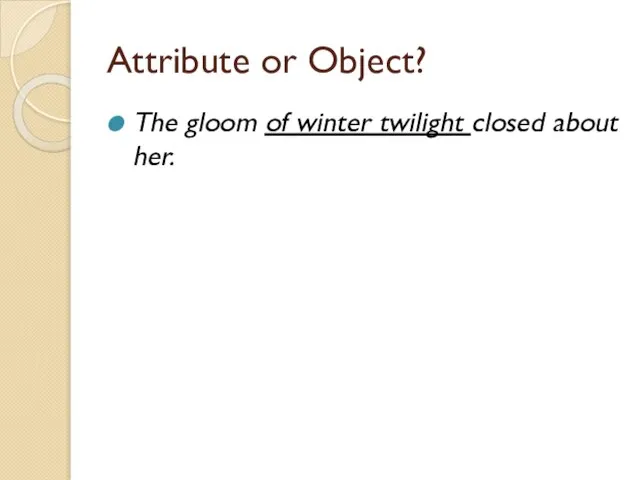
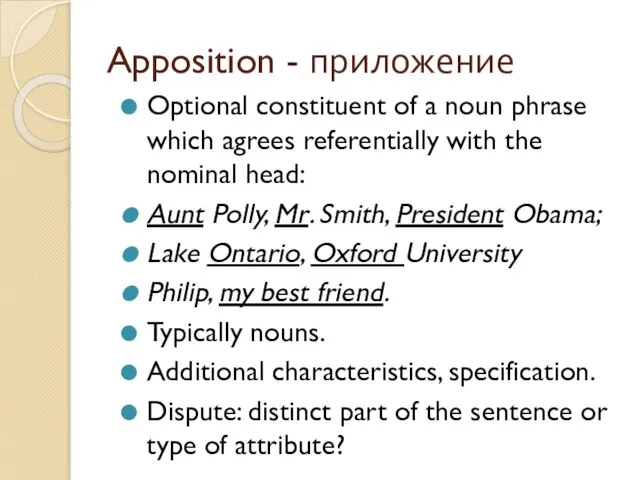
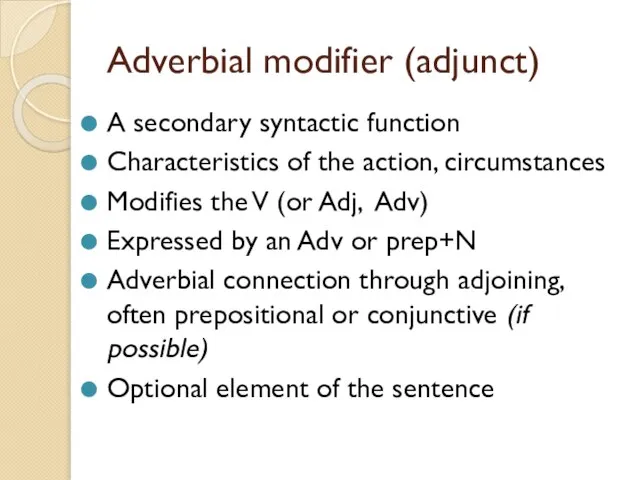
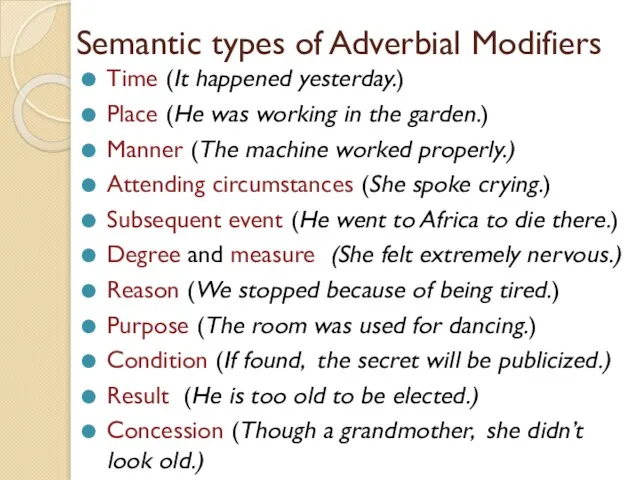

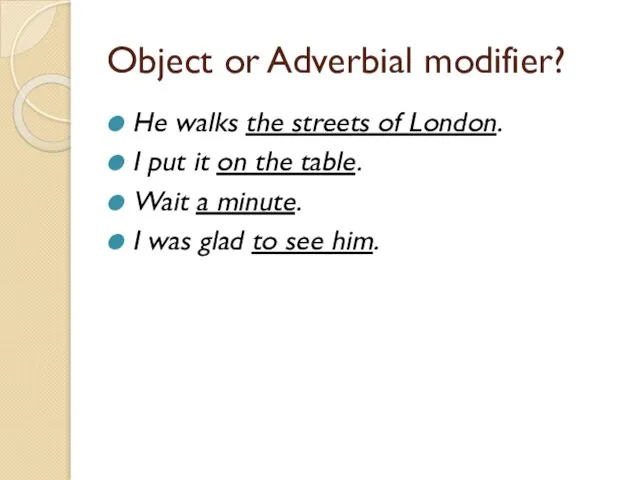
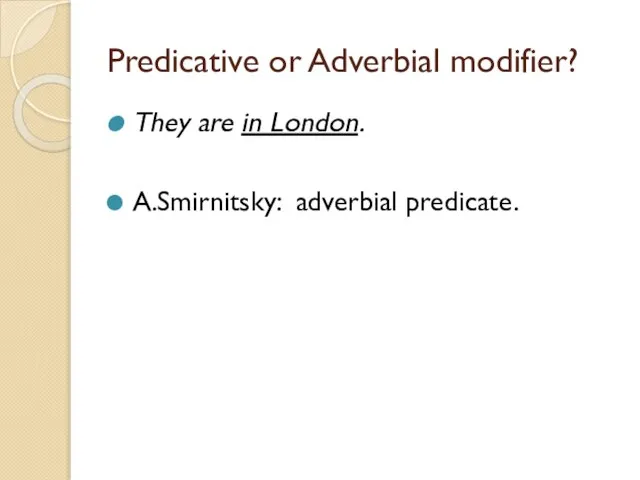
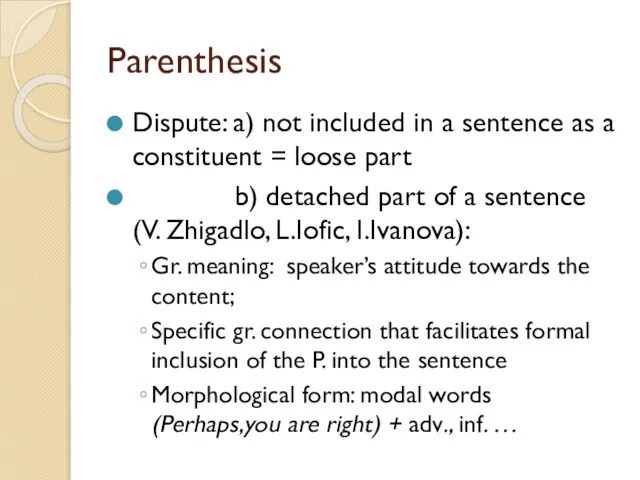
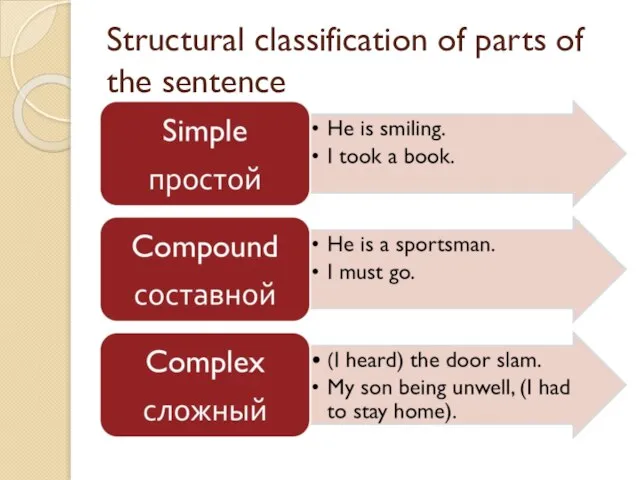


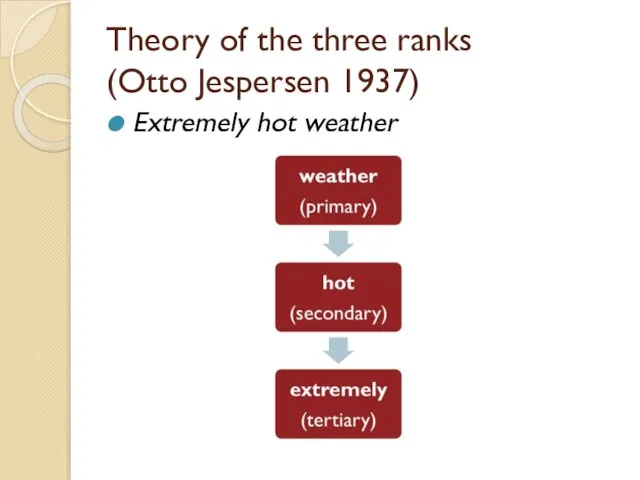
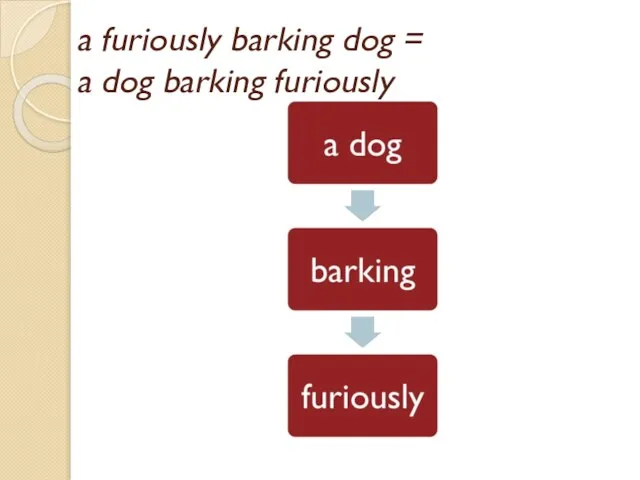
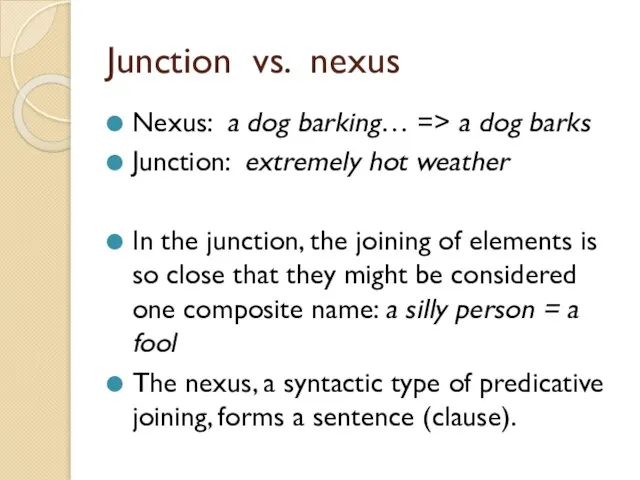
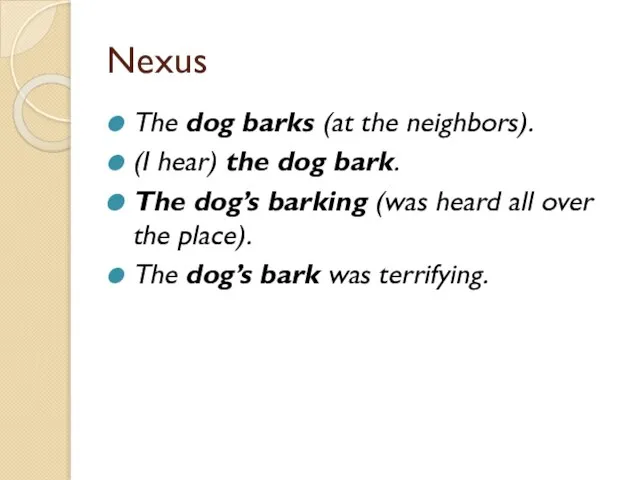
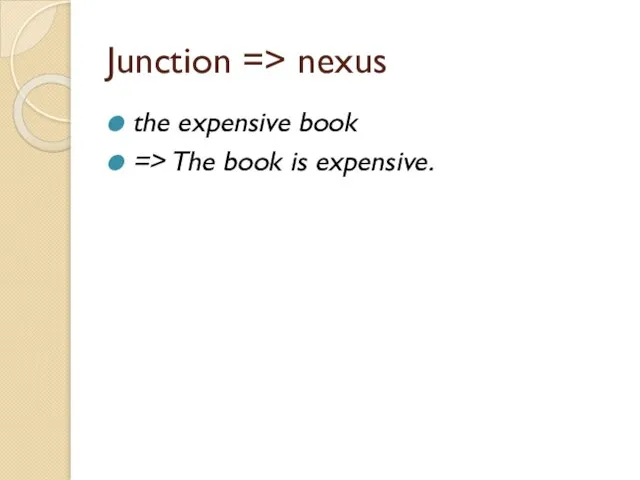
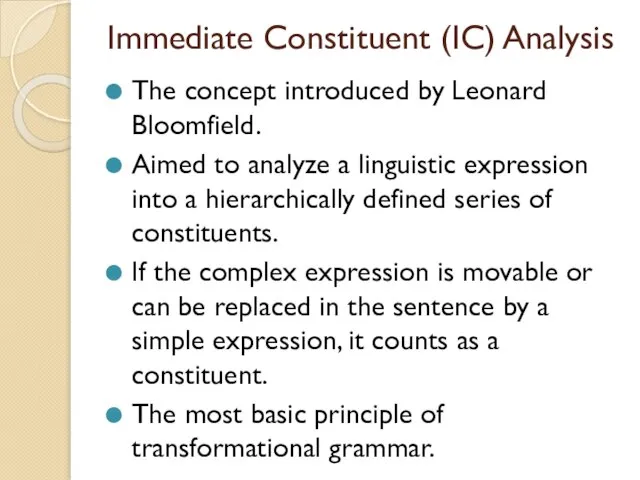
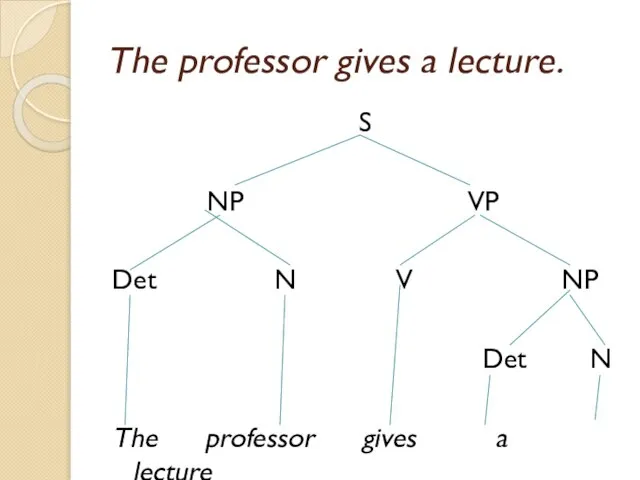
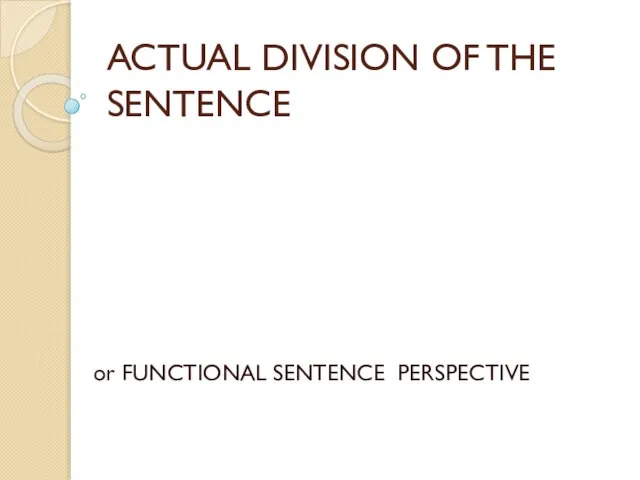
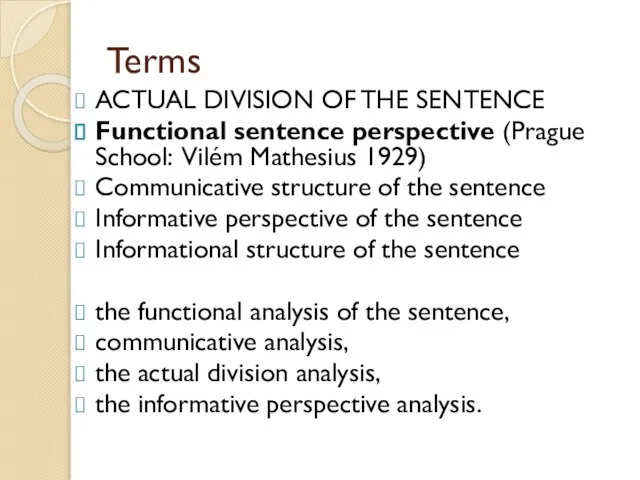
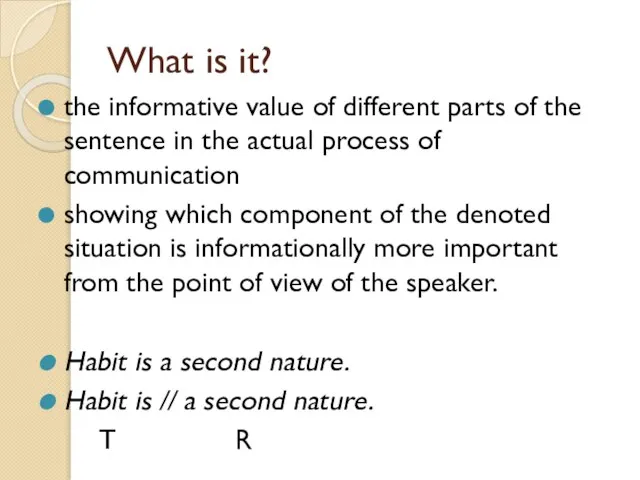
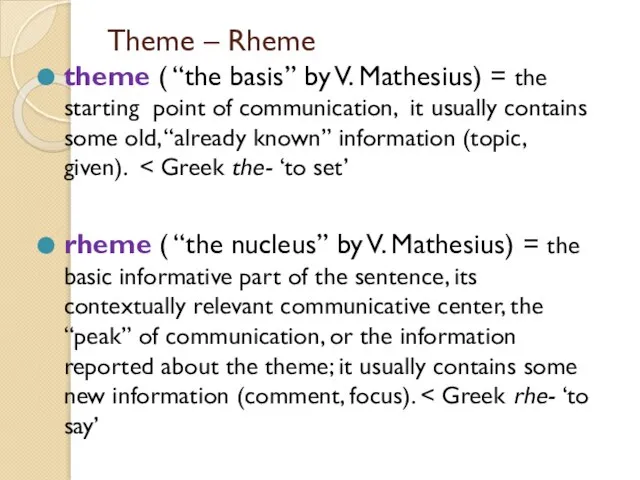
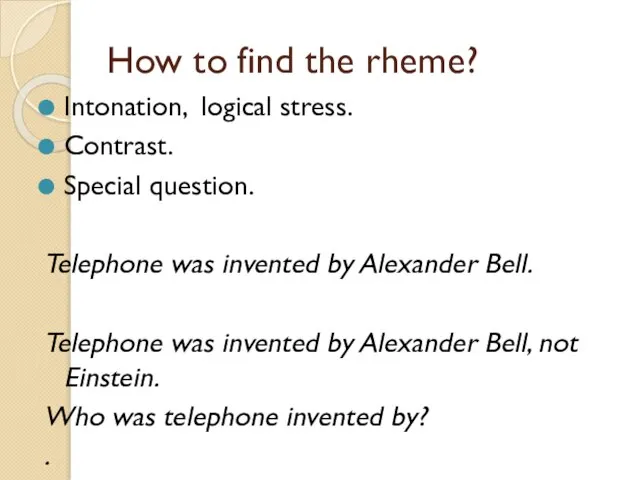
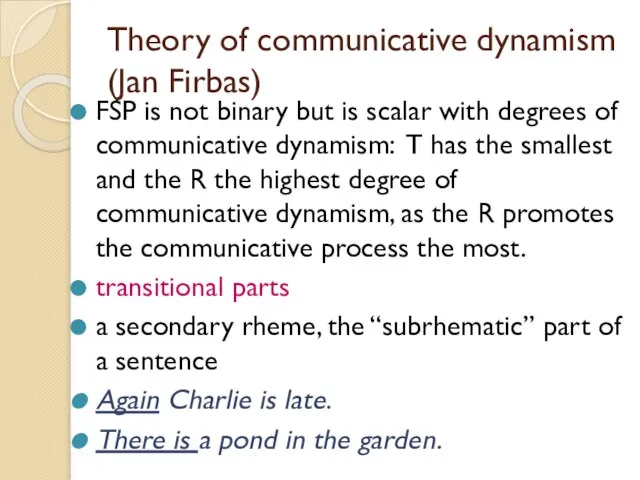
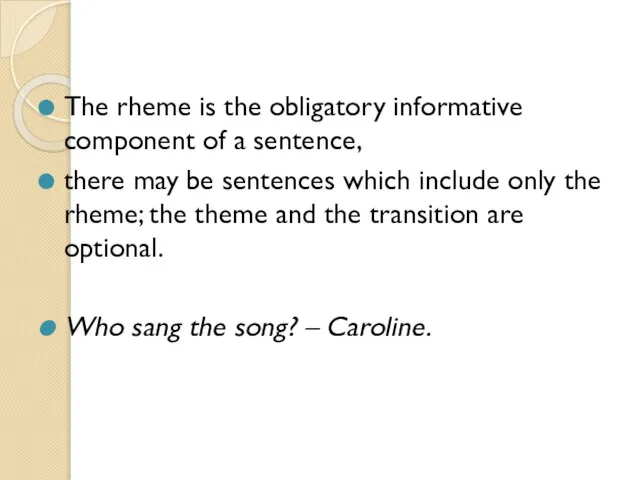
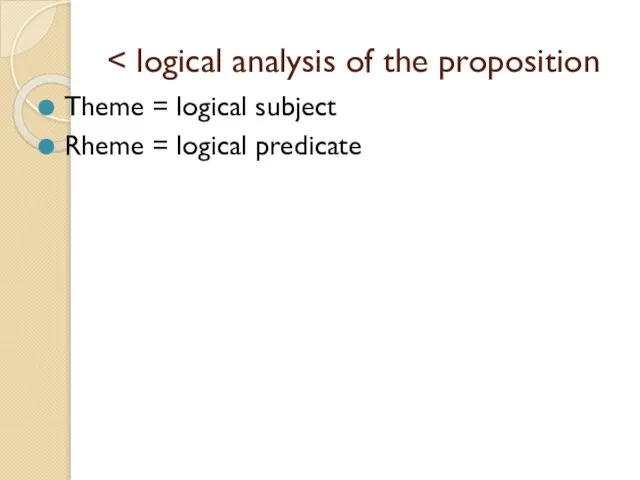
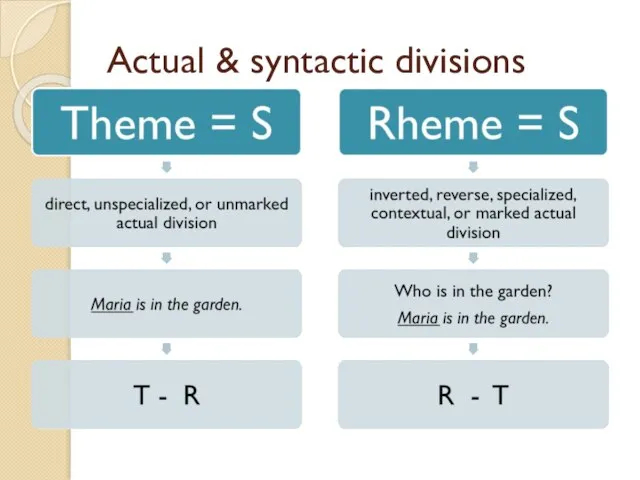
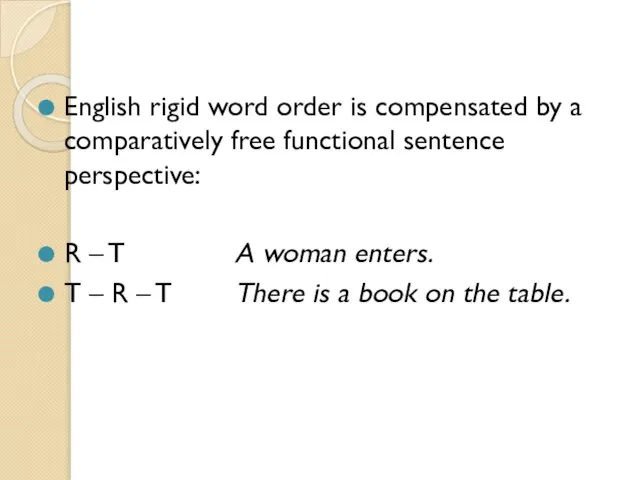

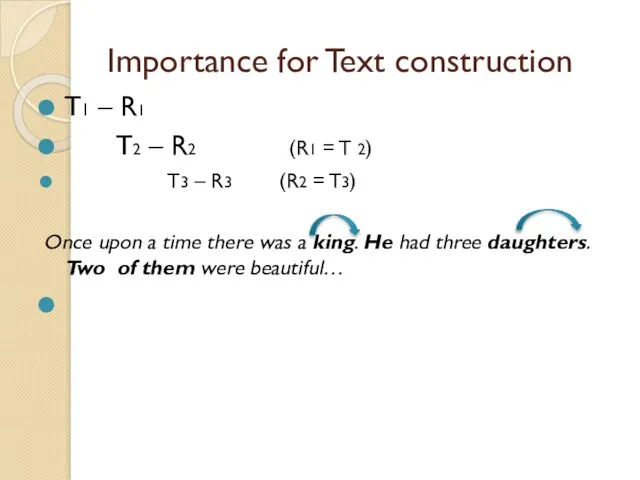

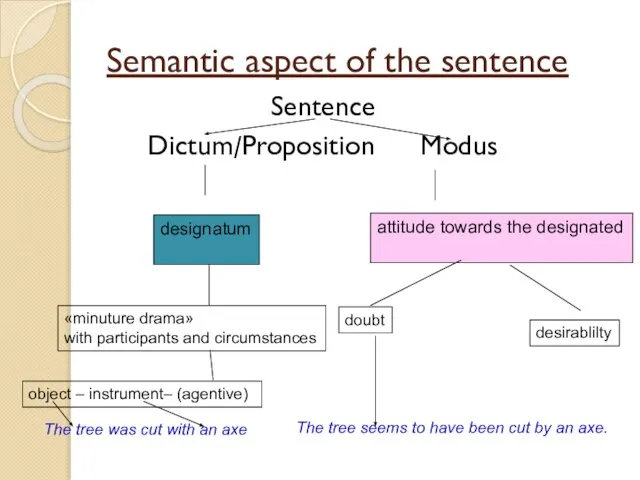
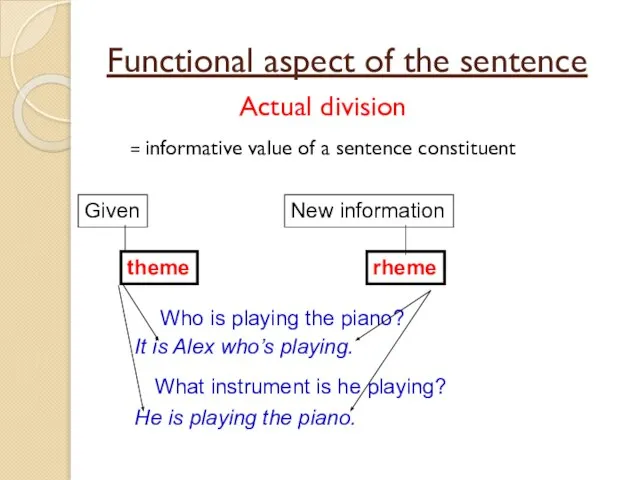
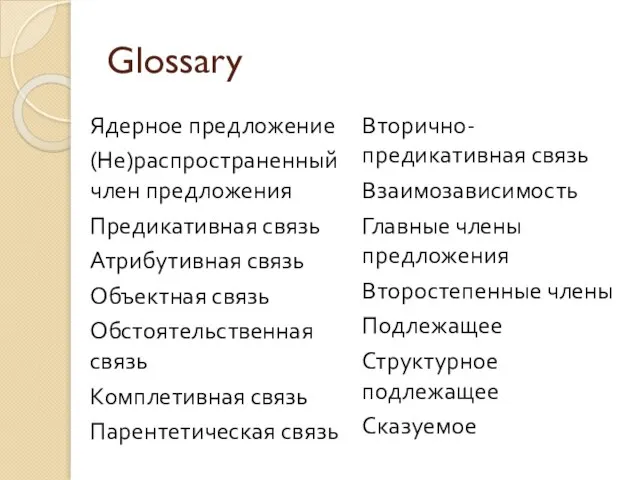

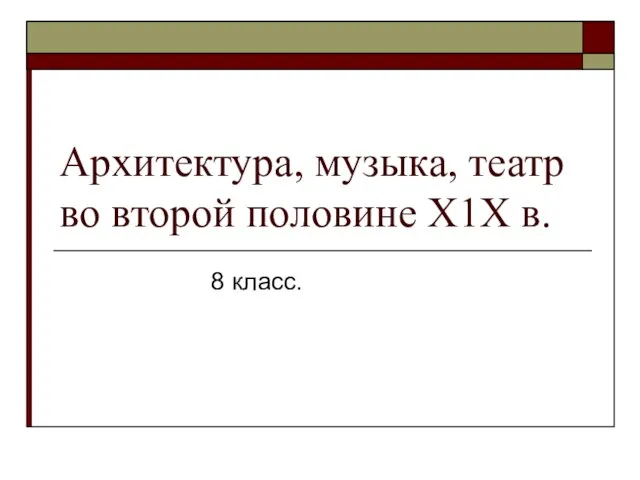 Архитектура, музыка, театр во второй половине Х1Х в. 8 класс.
Архитектура, музыка, театр во второй половине Х1Х в. 8 класс. Частный Краеведческий музей «Природа и человек»
Частный Краеведческий музей «Природа и человек» Аква-реконструкция PLEYANA (1) [Автосохраненный]
Аква-реконструкция PLEYANA (1) [Автосохраненный] Естествознание 6 класс 6.1В Человек. Земля. Вселенная Материки и океаны. Презентация (1)
Естествознание 6 класс 6.1В Человек. Земля. Вселенная Материки и океаны. Презентация (1) Қазақстанда ауыл шаруашылығын ұжымдастыру
Қазақстанда ауыл шаруашылығын ұжымдастыру Галымжан Амир 3Е проект фасоли
Галымжан Амир 3Е проект фасоли История становления и развития логистики. Сущность и содержание логистики
История становления и развития логистики. Сущность и содержание логистики Мемлекеттік бюджеттен тыс қорлар
Мемлекеттік бюджеттен тыс қорлар С наступающим Новым годом!
С наступающим Новым годом! Презентация на тему Клуб весёлых математиков
Презентация на тему Клуб весёлых математиков  Фотография
Фотография x = cost
x = cost Дополнительная образовательная программа Обучение основам тестопластики для детей 3-7 лет
Дополнительная образовательная программа Обучение основам тестопластики для детей 3-7 лет Арабское письмо
Арабское письмо МРТ
МРТ Презентация на тему Рукописные книги Древней Руси
Презентация на тему Рукописные книги Древней Руси Гипотеза лингвистической относительности или гипотеза Сепира-Уорфа
Гипотеза лингвистической относительности или гипотеза Сепира-Уорфа Защитники Отечества
Защитники Отечества Презентация на тему Волейбол. Передача сверху
Презентация на тему Волейбол. Передача сверху Я буду жить всегда в твоей любви
Я буду жить всегда в твоей любви Счета и двойная запись
Счета и двойная запись Якушева Надежда Владимировна
Якушева Надежда Владимировна «Современный сайт, как способ коммуникации между органами государственной власти и населением: тенденции, технологии, требования
«Современный сайт, как способ коммуникации между органами государственной власти и населением: тенденции, технологии, требования Формируя социологическое видение рекламы
Формируя социологическое видение рекламы Нотация IDEF
Нотация IDEF Let’s talk about Weddings
Let’s talk about Weddings АВТОМАТИЗАЦИЯ ИСПЫТАНИЙ АСИНХРОННЫХ ДВИГАТЕЛЕЙ ПО БЕЗНАГРУЗОЧНОЙ МЕТОДИКЕ
АВТОМАТИЗАЦИЯ ИСПЫТАНИЙ АСИНХРОННЫХ ДВИГАТЕЛЕЙ ПО БЕЗНАГРУЗОЧНОЙ МЕТОДИКЕ Legends of Kazan
Legends of Kazan